Skimming plaster is a technique used to create a smooth and even surface on walls and ceilings.
In this article, we will explore the different types of skimming plaster, such as gypsum, lime, cement, and clay plaster. We will also discuss the various uses of skimming plaster, including smoothing walls, covering imperfections, and preparing surfaces for painting.
Delve into the application process, benefits, and common mistakes to avoid when using skimming plaster. Discover everything you need to know about skimming plaster!
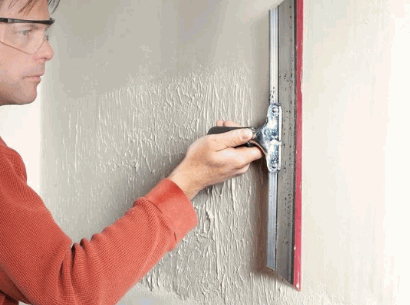
Skimming plaster is a technique used to apply a thin coat of plaster to a wall or surface, creating a smooth and even finish. It is commonly used to improve the appearance of walls by covering imperfections and providing a clean base for painting or wallpapering.
Skimming plaster is a versatile method that can rejuvenate tired walls and transform the overall aesthetic of a room. This technique is particularly effective in concealing cracks, bumps, and uneven surfaces, giving the wall a fresh, pristine look. The application of a thin layer of plaster not only enhances the visual appeal of the space but also serves a functional purpose by ensuring a level and solid foundation for subsequent decorative treatments. Skimming plaster allows for greater flexibility in terms of design choices and helps achieve a professional finish.
Explore further: How To Plaster A Ceiling
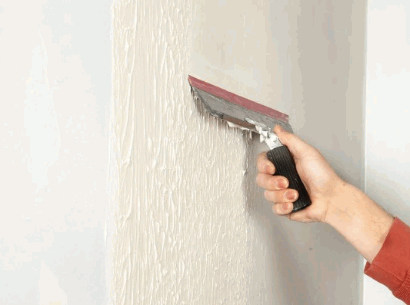
Skim plaster comes in various types, including gypsum plaster, lime plaster, cement plaster, and clay plaster. Each type offers unique characteristics and benefits for different applications.
Gypsum plaster is a popular choice due to its smooth finish and easy application. It is composed of gypsum, water, and sometimes additives like perlite for improved strength. This type of skimming plaster is ideal for interior walls and ceilings, providing good adhesion to various surfaces.
Gypsum plaster is a popular choice for skimming surfaces due to its ease of application and smooth finish. It is known for its fast-drying properties and ability to create a uniform base for further decoration.
Regarding mixing gypsum plaster, the process is relatively straightforward. The powder is slowly added to clean water, allowing it to soak, and then mixed thoroughly until achieving a creamy consistency. This ensures a lump-free mixture that is ready for application. Applying gypsum plaster onto walls requires a skilled hand to achieve a smooth and even surface. Utilising the correct tools, such as trowels and hawks, is essential for achieving the desired results.
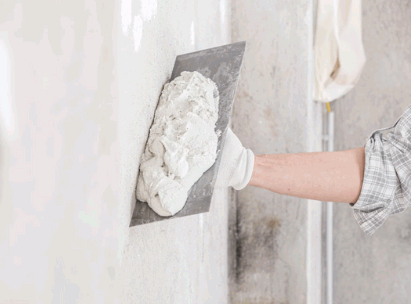
Lime plaster is a traditional choice known for its breathable nature and flexibility, making it suitable for historic buildings or areas with high moisture levels. It provides a unique finish that adds character to surfaces.
Regarding properties, lime plaster has excellent vapour permeability, allowing moisture to evaporate rather than get trapped within the walls. This helps prevent dampness and mould growth, promoting a healthier indoor environment. In restoration projects, lime plaster is highly valued for its ability to match the original aesthetics, offering a seamless blend with existing structures.
The application process of lime plaster typically involves slaking quicklime, mixing it with water and aggregates, followed by application in layers. Special considerations include ensuring proper cure times between coats and using the right tools to achieve a smooth or textured finish.
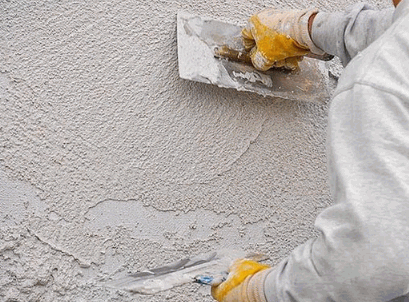
Cement render is a durable option often used for exterior surfaces or areas prone to high impact. It provides a strong coat that can withstand harsh weather conditions, making it ideal for outdoor applications.
Its versatility allows for application on a variety of surfaces, including concrete, brick, and even metal. The thickness of the render can be adjusted depending on the surface and the desired finish. Cement render not only offers protection but also adds an aesthetic appeal to buildings. By forming a robust layer, it shields the structure from moisture, preventing damage and decay over time. This type of render is commonly used for walls, ceilings, and even decorative elements.
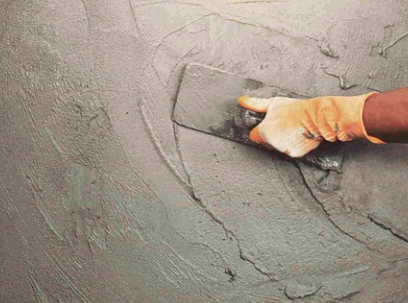
Clay plaster is an eco-friendly option that offers a smooth and natural finish to walls. It is breathable and regulates indoor humidity levels, creating a healthy living environment.
One of the key benefits of using clay plaster is its sustainable nature. By utilising natural materials, it reduces the environmental impact typically associated with traditional wall finishes.
Clay plaster has excellent thermal properties, helping to insulate homes and reduce energy consumption. The application process of clay plaster involves mixing the clay with water to create a paste, which is then applied to the walls and allowed to dry naturally.
Not only does clay plaster contribute to a healthier interior due to its ability to absorb and release moisture, but it also adds a unique, earthy aesthetic appeal to any space, creating a warm and inviting atmosphere.
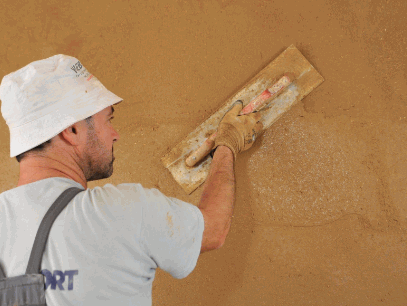
Skimming plaster serves multiple purposes, such as smoothing walls, covering imperfections, and creating a flawless surface for painting. It is a versatile technique that enhances the aesthetic appeal of any room.
One significant benefit of skimming plaster is its ability to provide a fresh start for a room's decor. By creating a smooth and even surface, skimming allows homeowners to choose from a myriad of finishing options like painting, wallpapering, or even leaving the texture exposed for a modern look. In-home improvement projects and skimming plaster can revitalise outdated spaces and bring a sense of cohesion to a design scheme. Whether it's disguising old wallpaper seams, repairing damaged walls, or simply updating the look of a room, skimming plaster offers a cost-effective solution for transforming living spaces.
Skimming plaster is commonly used for smoothing walls, especially in rooms where a flawless finish is desired. It helps create a uniform surface that enhances the overall look of the space.
Before starting the skimming process, it's crucial to prepare the walls adequately. This involves cleaning the surface thoroughly to remove any dirt, grease, or loose material that could affect the adhesion of the plaster. Repair any cracks or holes in the wall before applying the skim coat to ensure a seamless and level finish.
When applying the plaster, use a steel trowel to spread it evenly across the wall in a thin layer. Work in small sections, feathering the edges to blend the plaster seamlessly. Sand the surface lightly once the plaster has dried to achieve a smooth and polished look.
The benefits of a smooth wall finish extend beyond aesthetics. In living rooms and bedrooms, smooth walls provide a modern and elegant backdrop for furniture and decor, enhancing the overall ambiance of the space. In kitchens and bathrooms, a smooth finish makes walls easier to clean and maintain, reducing the accumulation of dust and grime.
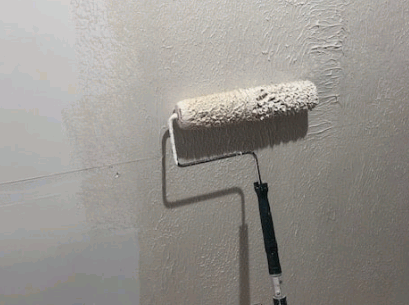
Skimming plaster is an effective solution for covering imperfections on walls or surfaces. By applying a thin coat of plaster, minor flaws or uneven areas can be concealed, resulting in a seamless appearance.
Common imperfections that can be easily remedied using skimming plaster include hairline cracks, dents, uneven textures, and small bumps. The process of achieving a flawless surface starts with preparing the wall by cleaning it thoroughly and ensuring it is dry and free of loose debris. Next, apply a bonding agent to promote adhesion before evenly spreading the skimming plaster using a trowel in smooth, overlapping strokes. Once dry, sand the surface lightly to remove any excess plaster and achieve a smooth, even finish.
Skim plaster is an essential step in creating a smooth surface for painting. By applying a skim coat of plaster, the wall becomes a perfect canvas for paint, ensuring a professional and polished finish.
When walls are properly skimmed before painting, imperfections and bumps are smoothed out, providing a seamless foundation for the paint to adhere to. This process not only enhances the aesthetic appeal of the walls but also prolongs the lifespan of the paint job. To achieve a flawlessly smooth surface, skilled tradespeople use techniques such as feathering, floating, and sanding to ensure that every inch of the wall is even and ready for painting. It's crucial to prime the surface after skimming to seal and further prepare the wall, maximising the adhesion of the paint.
The application of skimming plaster involves several key steps, including preparing the surface, mixing the plaster to the correct consistency, applying the plaster in thin layers, and finishing with sanding for a flawless result.
Surface preparation is crucial for a successful skimming plaster application. Begin by ensuring the area is clean and free from dust, dirt, and debris. Next, use a primer or sealer to create a smooth base for the plaster.
When mixing the plaster, measure the water and plaster powder precisely to achieve the desired consistency. Stir the mixture thoroughly until it is lump-free and uniform.
Applying the plaster should be done gently and evenly in thin layers to avoid buildup and achieve a seamless finish.
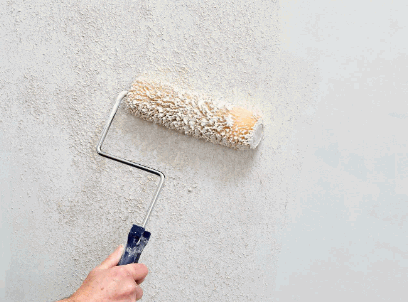
Properly preparing the surface before applying skimming plaster is crucial for achieving a successful finish. This step involves cleaning the wall, ensuring it is dry and free from debris, and priming the surface if needed.
It is essential to repair any cracks or imperfections on the surface before beginning the skimming process. Use a suitable filler to level out uneven areas and sand them smoothly for a seamless result.
For painted surfaces, it is recommended to lightly sand the paint to provide a better key for the new plaster. Similarly, if dealing with plasterboard, ensure the joints are taped and filled correctly to prevent any cracking in the future.
Mixing the plaster to the correct consistency is essential for a successful plastering application. The plaster should be mixed with fresh water using the recommended ratio to ensure a smooth and workable mixture.
Usually, the plaster-to-water ratio for plastering is around 4:1, but this may vary depending on the specific product instructions. One method to achieve the right consistency is by gradually adding plaster to water, and stirring constantly to avoid lumps. Using the appropriate tools, such as a mixing paddle attachment for an electric drill or a hand-held mixing tool, can help simplify the process.
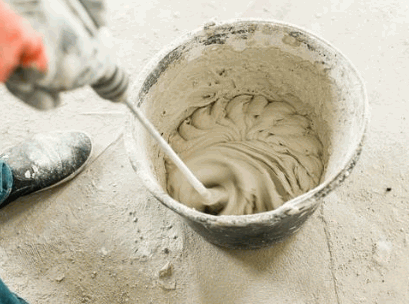
Applying skimming plaster requires a skilled technique to achieve a smooth finish. Using a hawk and float, the plaster is spread evenly in thin layers across the wall surface, ensuring uniform coverage and minimal imperfections.
Consistency in the application process is paramount. It is crucial to maintain a steady pace to avoid uneven build-up or drying patches. By feathering the edges with the float, you can blend each layer seamlessly, creating a seamless surface. Keep the hawk tilted slightly to keep the plaster workable, and rotate it frequently to prevent the mix from setting prematurely. Working in small sections and overlapping strokes will help in achieving a professional-looking result.
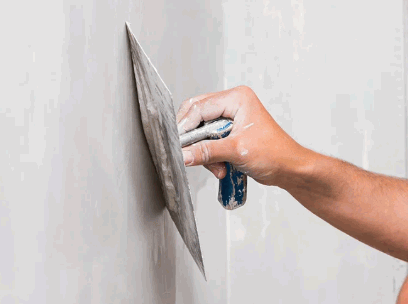
Sanding and finishing are the final steps in the skimming plaster process, aiming to achieve a smooth and flawless surface. Sanding helps remove any imperfections or rough areas, while finishing ensures a seamless base for further decoration.
Regarding sanding, it is crucial to use the right tools. Start with a coarse-grit sandpaper to tackle any prominent bumps or uneven spots, then gradually move on to finer grits for a smoother finish. Patience is key during this process to ensure a uniform surface. Once the sanding is complete, apply a primer to seal the surface and enhance adhesion for the final finish.
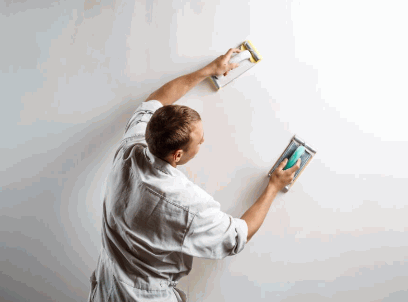
Skimming plaster offers various benefits, including creating a smooth and even surface, hiding imperfections, and enhancing the aesthetic appearance of a room. It provides a versatile solution for achieving a flawless finish.
Using skimming plaster transforms walls into a seamless canvas that serves as an ideal backdrop for any décor. It not only elevates the overall look of the room but also helps in creating a more visually pleasing environment. The application of skimming plaster can significantly improve the quality of the walls, making them appear brand new. By concealing any blemishes or irregularities, skimming plaster ensures that the final result is polished and professional.
One of the key benefits of skimming plaster is its ability to create a smooth and even surface on walls. This smooth finish adds a touch of elegance to any room and provides the ideal base for various decorative treatments.
A seamless surface achieved through skimming plaster not only enhances the visual appeal of a space but also plays a crucial role in elevating the overall ambiance. Imagine a room with perfectly smooth walls, where light bounces off evenly, creating a subtle glow that transforms the atmosphere. This flawless finish not only complements modern or minimalist decor but also serves as a canvas for a variety of design options.
From sleek wallpaper to intricate stenciling, a smooth wall surface allows for endless creative possibilities, making it a versatile choice for interior aesthetics.
Skimming plaster excels at hiding imperfections on walls, such as cracks, dents, or uneven surfaces. By applying a skim coat of plaster, these flaws are concealed, resulting in a seamless and flawless appearance in any room.
For instance, hairline cracks that can be a common sight on older walls can easily be masked with a layer of skimming plaster, creating a smooth canvas that is ready for painting or wallpapering. Similarly, bumps and dents from previous wall fixtures can be smoothed out entirely, erasing any evidence of prior damage. Even the most subtle irregularities in a wall's texture can be corrected with the application of skimming plaster, ensuring a uniform and pristine surface.
Using skimming plaster can significantly enhance the aesthetic appearance of a room by providing a clean and flawless finish. It allows for greater flexibility in decorating and improves the overall visual appeal of the space.
Skimming plaster creates a smooth canvas that seamlessly blends with various design styles, from minimalist to traditional. This versatility makes it a preferred choice for interior decorators and homeowners looking to achieve a polished look. With its ability to hide imperfections and create a uniform surface, skimming plaster sets the stage for the addition of decorative elements such as mouldings, wallpapers, or paint finishes.
Skimming plaster acts as a foundation that elevates the entire ambience of a room, transforming it from ordinary to extraordinary. Its clean lines and seamless texture provide a modern touch while maintaining a timeless elegance that suits any interior theme.
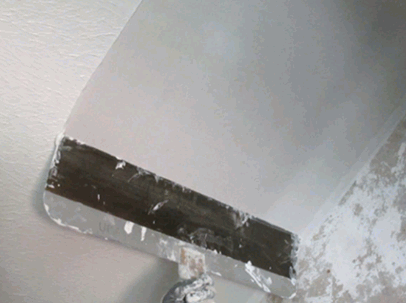
Several common mistakes can occur when skimming plaster, such as not preparing the surface properly, using the wrong type of plaster, not mixing the plaster correctly, and applying either too thin or too thick layers of plaster.
When skimming plaster, failing to adequately prepare the surface can lead to adhesion issues, resulting in a patchy or uneven finish. To avoid this, ensure that the surface is clean, free of debris, and properly primed before applying the plaster.
Using the wrong type of plaster, such as one not suitable for skim coating, can result in cracking or peeling over time. Be sure to choose a high-quality skimming plaster specifically designed for the task at hand to guarantee a durable and smooth finish.
Incorrectly mixing the plaster can lead to inconsistencies in texture and setting time. Follow the manufacturer's instructions precisely to achieve the right consistency and avoid any setting problems during application.
Applying layers that are too thin may not fully cover imperfections, while layers that are too thick can result in sagging and drying issues. Aim for a consistent thickness across each layer, allowing for proper curing and a flawless end result.
A critical mistake in skimming plaster is not preparing the surface adequately before application. Failing to clean, dry, or prime the wall can result in adhesion issues, uneven finishes, or poor plaster performance.
Surface preparation is crucial in achieving a flawless, professional finish when working with plaster. Without proper preparation, any imperfections on the wall can be magnified, leading to a subpar outcome. To ensure a suitable base for your plaster project, begin by inspecting the surface for any damage, cracks, or imperfections that need to be addressed. Next, thoroughly clean the area to remove dust, dirt, and grease, which can hinder adhesion.
Priming the wall is another essential step; this helps create a uniform surface for the plaster to adhere to, enhancing its durability and longevity.
Selecting the wrong type of plaster for skimming can lead to issues such as poor adhesion, improper finish, or unsuitability for the application surface. It is essential to choose the appropriate plaster type based on the specific project requirements.
Using the wrong type of plaster can create a domino effect of problems in a skimming project. Not only does it compromise the adhesion between the plaster and the surface, but it can also result in an uneven finish that detracts from the overall aesthetic appeal. The compatibility between the plaster and the surface is crucial for a successful outcome.
Incorrectly mixing the plaster can result in issues such as lumps, inconsistent texture, or poor workability. It is crucial to follow the manufacturer's guidelines and achieve the right consistency for a successful skimming application.
Proper mixing of plaster is essential to ensure that the final outcome of the skimming project meets the desired quality standards. Inadequate mixing can lead to a range of problems that may compromise the overall finish and durability of the surface.
One common issue that arises from incorrect plaster mixing is the formation of lumps, which can create an uneven surface texture and affect the aesthetics of the final coat. An inconsistent texture can make it challenging to achieve a smooth and uniform finish during the application process.
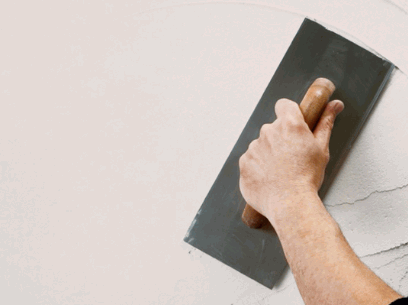
Applying skimming plaster in either excessively thin or thick layers can lead to issues such as poor coverage, uneven surfaces, or extended drying times. Achieving the recommended thickness is crucial for a successful skimming finish.
When skimming plaster is applied too thinly, it struggles to cover imperfections on the underlying surface, often requiring multiple coats to achieve a satisfactory result. This not only extends the time and effort needed but also increases the overall cost of the project.
On the other hand, using thick layers of skimming plaster can result in difficulties in achieving a smooth and uniform finish. Thick plaster is more prone to cracking, shrinking, or sagging, leading to a less durable and visually appealing outcome.
To ensure optimal results, it is essential to follow manufacturer guidelines on plaster thickness and application techniques. Working in small sections and maintaining a consistent thickness throughout the project can help achieve a professional and flawless skimming finish.